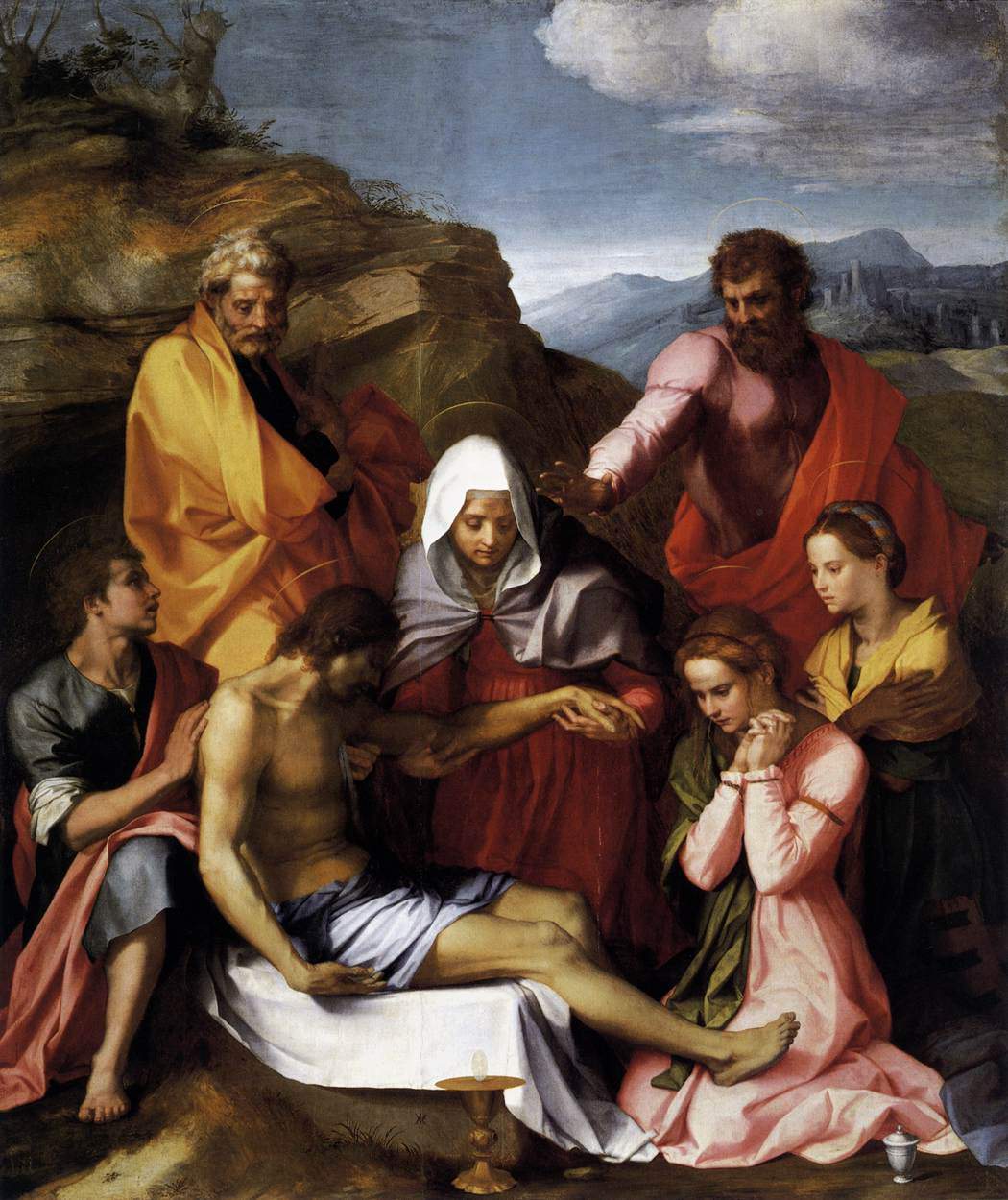The work of art is always a political act, and it is impossible to separate art from politics
Populist rhetoric against the press, in Italy as well as abroad, risks producing nefarious effects on art journalism as well: the problem, pointed out by the editor of The Art Newspaper, Helen Stoilas, in an article last August 16, entails unprecedented implications for the art world as well, since behind such a sensitive issue lies the danger of undermining our relationship with works of art. When we look today at a Madonna and Child from the 14th century, a Renaissance Pietà or a Baroque martyrdom scene, the gap that separates us from the historical, cultural and social reality of those eras often prevents us from grasping one of the fundamental aspects of the work of art, that of a political act that becomes such insofar as it is a “faithful representation of a spirit,” as critic Lewis Hyde has well pointed out, referring to Walt Whitman.
 |
| Andrea del Sarto, Pieta di Luco (1523; oil on panel, 239 x 199 cm; Florence, Palatine Gallery, Palazzo Pitti) |
This is certainly not to speak of politics in the most usual and customary terms, but there is no doubt that it is a “political act,” Hyde again specifies, “to create an image of the self or the collective.” Whitman, in a letter sent Aug. 14, 1852, to Senator John Parker Hale, referring to the political situation in New York City, said that in the heart of that industrious city were moving tens of thousands of young people in whom burned, “almost proudly, that sacred fire which, when more and when less, but nevertheless in all ages, has waited for nothing more than the chance to leap into the open and upset the calculations of tyrants, conservatives and all their acolytes.” The artist is the one who gives form to this “sacred fire.” But even if we were to take a diametrically opposed view (the one that links, and has always linked, art to power relations), it could be said, in more general terms, that the artist is still the one who gives substance to a message, of whatever kind, but always cast within a precise context: in any age, it has always been so.
The reason for this lies in the very purpose of the work of art, conceived as a means “to arouse powerful and complex emotions,” to use the words of Michele Dantini, who in one of his latest works, Art and the Public Sphere, expressed all his disappointment with that part of the academic world totally devoted to “the most reluctant disciplinary specialism” that prevents “humanistic expertise from inserting itself into the general discussion and proving its usefulness from public points of view.” It is "a matter of transcending the specialist limit in order to lead the study of art back to that ’usefulness for life’ which Nietzsche’s second Unactual Consideration raised as the banner of the age to come." Art criticism, and with it art journalism, which is closely related to criticism as a suitable medium for providing shared platforms and connections, as well as for creating bonds and giving rise to community, serve a necessary civic function, as mediators between the work and the public (and art journalism also as a direct mediator between politics strictu sensu and the public, a function that criticism fulfills indirectly). A civic function that is nourished by that founding and fundamental act that is the interpretation of works of art, indispensable since the work of art expresses itself in a language that is different from ours and that does not pass through words: and this implies “first recognizing and processing those emotions that images arouse in us - emotions that are not simply aesthetic, but involve the entire sphere of our existence.” And this, Dantini continues, “is a good reason to affirm that visual order skills have immediate linguistic and cognitive, as well as civic, utility for us,” because they help us “order complex experiences and move less awkwardly between different sensory realms.”
Affirming the inseparability of art and politics is thus tantamount to re-establishing the role of criticism, and with it art journalism, in the sphere of civil society, of which criticism and journalism do not constitute a mere frill good only for offering abstracts in a language accessible to those who believe that art is merely a faint means of experiencing superficially aestheticizing experience. It means restoring to criticism and journalism the highest sense of their mission which, by means of theaptitude to interpret that is "conditio sine qua non of an awakened and qualified citizenship," consists in placing themselves at the service of the public and citizens, spurred in this sense to interpret themselves, that is, to establish links and connections, raise doubts, advance insights and reflections. Not only that: affirming the inseparability of art and politics also means elevating art itself above the irrelevance to which contemporary society seems to have relegated it, and at the same time it means affirming the freedom of those who exercise such a vital function for our democracies. In conclusion, returning to the insights provided by Stoilas, it is possible to say that art is a powerful tool for nailing power to the truth: consequently, critics and journalism should have no qualms about asserting their freedom in accompanying artists in that deeply political act that is the “pursuit of truth and justice.”
Warning: the translation into English of the original Italian article was created using automatic tools. We undertake to review all articles, but we do not guarantee the total absence of inaccuracies in the translation due to the program. You can find the original by clicking on the ITA button. If you find any mistake,please contact us.





























